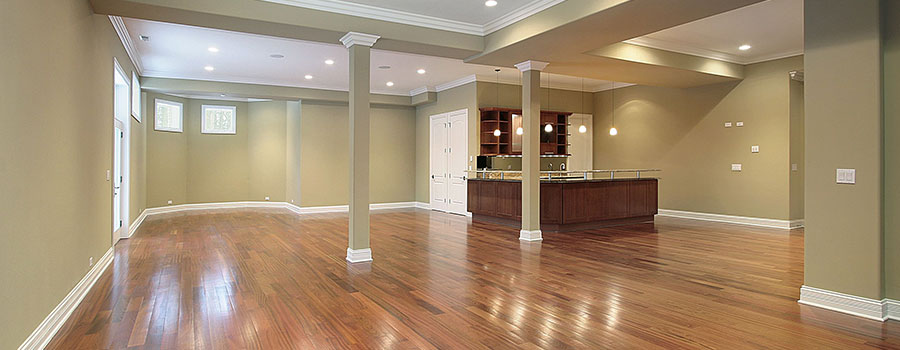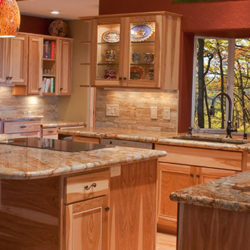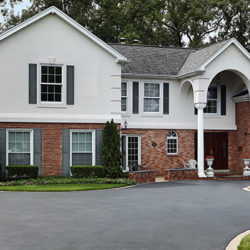Remodeling your home is an excellent way to create the space of your dreams. Unfortunately, home addition projects can quickly get expensive. If you are wondering what is the most expensive part of the home addition, structural alterations are one of the most costly parts of any renovation project.
This covers any work that affects your home’s current layout, such as removing or adding walls, constructing additional rooms, or reorganizing the floor plan.
Structural alterations frequently necessitate significant planning, permits, and specialized work from expert home addition contractors, all of which add to the final cost.
For example, if you’re thinking about tearing down walls to create an open-concept living space, you’ll need to consider not only the demolition expense but also the structural reinforcements that may be required to keep your home intact.
In some circumstances, you may also need to relocate electrical wiring or plumbing, which increases the cost.
When you are remodeling your house, there are plenty of things you should pay attention to, including:
The frame of the house
It’s not surprising that a house’s frame is one of the most expensive components of the building. It is critical to the structure since it serves as its foundation and backbone. The high cost is due to a variety of variables, including the materials, time, and labor-intensive aspects of framing.
Timber wood, a common material for house framing, is quite expensive due to its quality and longevity. Unlike regular wood, timber wood fetches a premium for its strength and longevity, which raises the entire price.
Furthermore, framing requires detailed craftsmanship and a complicated structural design, raising the demand for skilled labor.
As you can tell, hiring experienced individuals capable of performing the job correctly is critical but expensive.
The foundation of the house
The foundation of a house is critical in providing stability and protection against numerous risks. Its major duty is to support the structure and serve as a barrier against water damage, earthquakes, fires, and other possible hazards.
The foundation, which consists of a subfloor and footing, supports the house’s structural parts, such as joists, rafters, and beams. The foundation, which is often made of concrete or masonry, serves as the base for the entire structure.
Given its crucial role and the materials and labor required, the foundation accounts for a large amount of the cost in residential estimation. Investing in a strong, well-built foundation assures the safety and longevity of the property, making it a valuable investment.
The roof of the house
The cost of roofing varies greatly based on the style of roof you select. Concrete roofing is often more expensive than wooden roofing, though wooden roofing can be costly in some situations. The choice of roofing materials, such as tiles or concrete, affects the final cost.
Tiled roofs are more expensive due to the cost of the tiles themselves, as well as the plaster necessary for installation. In addition to this, specialized labor knowledgeable in both plastering and roofing is required, which adds to the total cost.
Similarly, concrete roofing incurs costs related to materials such as concrete and TMT bars, as well as experienced labor and specialized machinery for installation. The end product is a roofing material that is among the most expensive solutions available.
You should note that regardless of the roofing material used, the cost is determined by labor, supplies, and the level of skill necessary for installation.
House plumbing
Plumbing is a substantial investment in home development because it is a whole building system. The entire house must be designed and built to handle the plumbing system, which might vary depending on the style of the home being built, the number of bathrooms and sinks needed, and the size of the household.
Plumbing refers to all fixtures in the home that are connected to pipes, such as faucets, toilets, showers, sinks, and bathtubs.
A plumber installs the major pipes and fittings at the start of construction to ensure that the plumbing system is safe and functional for the residents.
The house finishes
Interior and exterior finishes are the aesthetic aspects of the building that improve the visual appeal and livability of a home. While finishing does not directly contribute to the building’s structural integrity or design, it does play an important part in establishing the overall appearance and feel of the house.
Inside finishing is painting, decorating, and furnishing the inside to create a pleasant and visually appealing living environment. This includes adding decorative features such as artwork, plants, furniture, and other random items that enhance the home’s feel.
Similarly, exterior finishes aim to improve the appearance of the property from the outside. This could include painting, landscaping, installing decorative features, and adding items like plants, flowers, and artificial grass to improve curb appeal.
It goes without saying that the interior and exterior finishes turn a house into a home by creating a welcoming and visually appealing atmosphere for its occupants.
The main reason they aren’t cheap is their processed state. Unlike raw materials used in the construction of a house, furniture goods are not raw. They are planned with accuracy, time, and consideration. That’s why they’re so pricey.
How can you save money when renovating?
Although house renovations aren’t cheap, there are a number of things you can do to make them a little bearable. These things include:
Buying the materials at a low price: Sourcing at the lowest possible price is always determined by talent and market knowledge. You can get the same material at a greater price than the average or at a lower price than the market. It all depends on your industry expertise and the merchants from whom you’re sourcing. Take time to research and find a store to buy the materials at a low cost.
To be on the safe side, buy the materials from a wholesaler. Wholesalers often offer lower prices than retailers because they focus on large-volume sales, whereas retailers operate on a product-by-product basis. This change in business style enables wholesalers to provide more competitive rates that you can take advantage of.
Some people might argue that you can try to cut costs by hiring cheap home addition companies DC, but this isn’t a good move. This is because you often get what you pay. This means that when you hire a cheap contractor, you end up getting substandard quality services. You don’t want this, do you?
To ensure this doesn’t happen, always hire a high-quality contractor. The contractors will be a little expensive, but they will be worth it in the long run.



